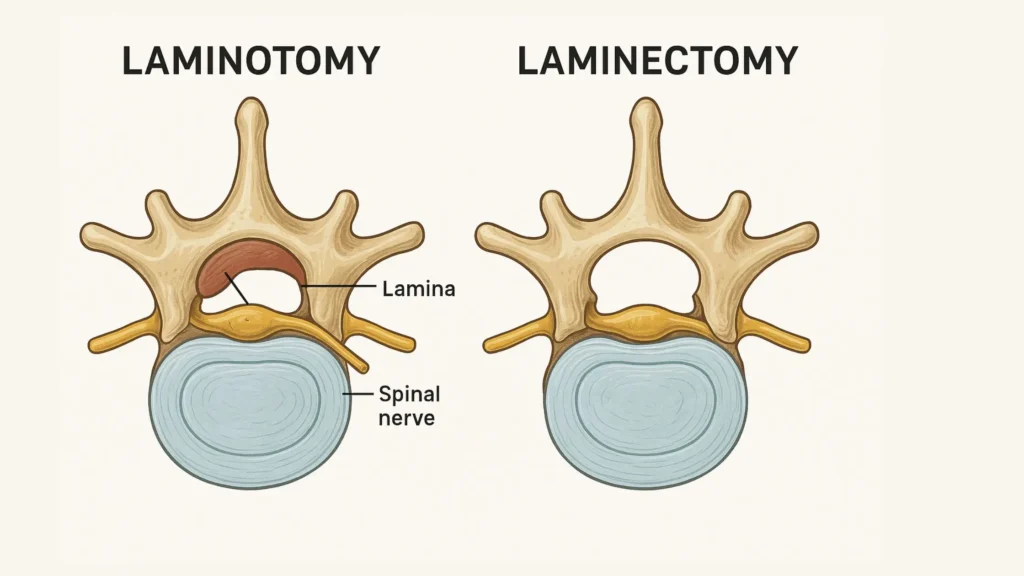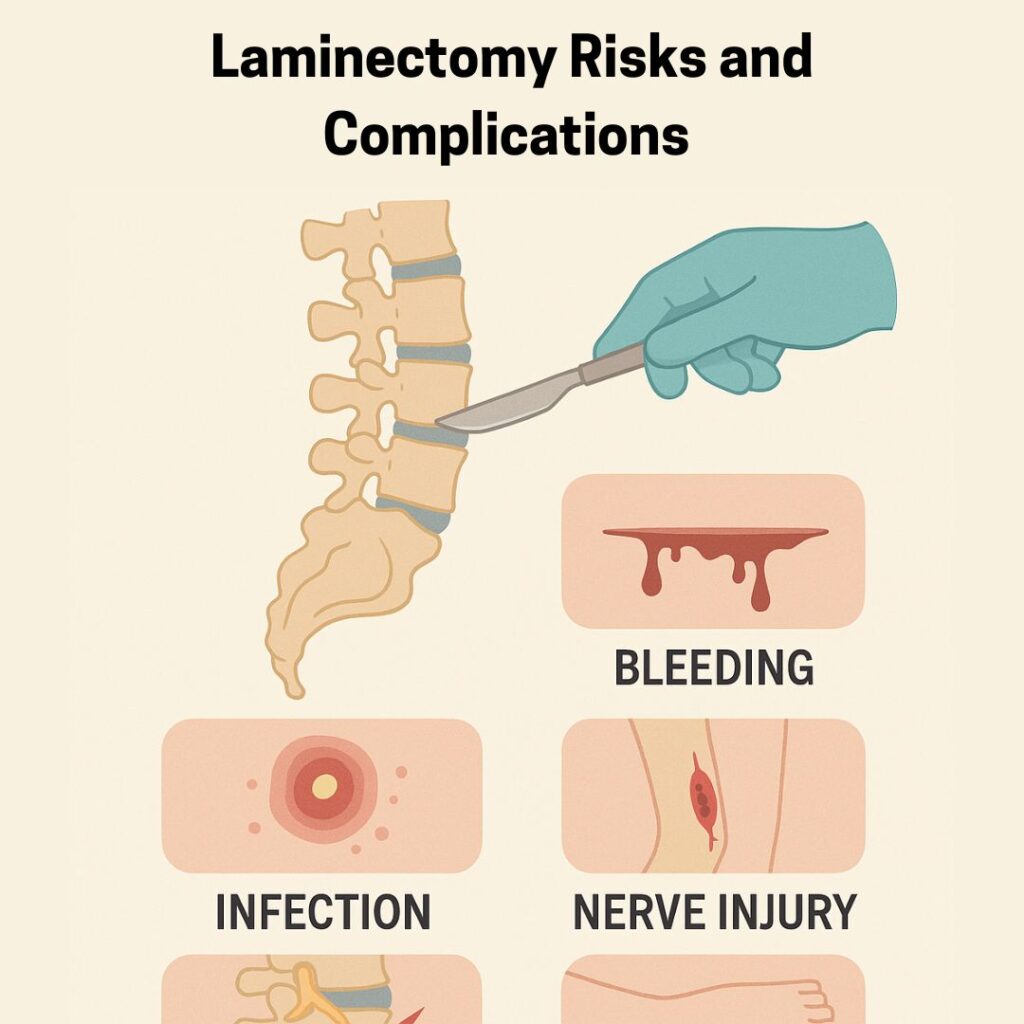Are you looking for a sure-shot solution to get relief from spinal pain? The laminectomy is a type of spinal surgery that can be your permanent healer and reduce pain by relieving nerve pressure.
Did you know? In India, spinal issues are on the rise, and experts attribute it to a sedentary lifestyle coupled with poor posture. The spike in cases over the past few decades is alarming. (Source: Down To Earth). And here, laminectomy surgery stands out as one of the most popular and effective surgeries.
This surgery alleviates nervous system constrictions by removing portions of the vertebral bone known as laminae. It also addresses conditions such as spinal stenosis, disc herniations, or trauma to the neck or lower back.
If you’re considering this procedure, it’s crucial to consult the best spine specialist in Hyderabad to ensure accurate diagnosis and effective treatment.
Continue reading to find out how it functions and the reasons behind it.
Understanding the need for Laminectomy
What is a laminectomy?
Laminectomy is a spinal surgery where the lamina, or the outer part of the vertebral bone, is excised. This alleviates crowding on the spinal cord and nerves by creating more room. Like most surgical procedures, it is carried out only after noninvasive methods have failed, or when one or more of the following conditions exist: constant pain, numbing, or loss of muscular strength.
Put simply, the surgery increases the available space for the spinal nerves and lessens irritation. It is also performed for the removal of tumors or other spinal surgical procedures.
“When done at the right time, laminectomy can transform a patient’s life by relieving long-term pain,” says Dr. Raveesh Sunkara, spine surgery expert.

When is Laminectomy Surgery Recommended?
You might require laminectomy surgery if you are experiencing:
- Chronic back or leg pain that does not respond to medication
- Pain that increases with mobility while walking or standing
- Numbness and tingling in the arms or legs
- Unsteady gait or difficulty walking
- Reduced control of urination or defecation in advanced stages of the condition
Bones or tissue that constrict the nerves cause them to send signals of pain. This surgery alleviates that irritation and pain by creating room.
How is the Procedure for Surgery Carried Out?
This is a concise overview of the laminectomy procedure steps:
| Step | Details |
|---|---|
| Anaesthesia | General anaesthesia is used to ensure no pain during surgery |
| Incision | A small cut was made over the spine in the affected area |
| Exposure | Muscles are moved aside to reach the spinal bone |
| Removal of Lamina | Lamina (partial or full) is carefully removed |
| Nerve Pressure Relief | Any disc fragments or bone spurs are also removed |
| Closure | The cut is stitched, and dressing is applied |
A surgeon might also perform a spinal fusion in addition to placing stabilizing instruments such as rods or screws.
Laminotomy vs Laminectomy
There is a distinction, even if the procedures both deal with the lamina spine:
- In laminectomy, the entire lamina is removed to relieve pressure.
- Laminotomy surgery removes only a segment of the lamina, enough to ease the pain while preserving the underlying structure.

Benefits of Laminectomy Surgery
Now, let’s explore the advantages according to some doctors:
- Pain alleviation: Most patients experience relief in either their back or leg pain.
- Improved mobility: Even routine activities like walking or standing, as well as sleeping, become much easier.
- Enhanced life quality: You are able to go back to work and have fun again.
- Pain-free: In most cases, the pain does not come back.
- Safe: The use of contemporary techniques increases safety by minimizing recovery time and risk.
Laminectomy Risks and Complications

Its procedure is safe, but laminectomy complications can arise. Some of them include:
- Infections around the surgical area
- Excessive bleeding or blood clot formation
- Spinal nerve injury or leakage of cerebrospinal fluid
- Muscle sac deterioration in the back
- Chronic pain that may result in the need for further surgeries
A specialist will discuss this information with you and make recommendations based on your individual condition. These risks can be reduced by choosing the correct doctor.
Back pain shouldn’t hold you back from living your life, so make a choice today.
Relevant Blogs:
Spine Surgery: When Is It Necessary and What to Expect
5 Essential Tips for a Faster Recovery After Spine Surgery
When is Back Pain a Sign of a Serious Spine Condition?
What to Expect After the Surgery
Timeline for Recovery
Your level of Laminectomy recovery hinges on the complexity of the laminectomy procedure you underwent, along with how closely you adhere to your postoperative instructions.
- Duration of stay at the hospital: 1 to 3 days
- Pain relief: From day one and managed with medications
- Physiotherapy: Starts a few days later
- Return to daily activities: Light duties are allowed after 4-6 weeks
- Do not engage in heavy exercise or lifting: For at least 2-3 months after surgery
Home Recovery Tips
To recover after surgery, do the following:
- Adhere to the follow-up contractual obligations dutifully
- Take prescribed medications
- Evade acts of bending or twisting
- Engage in daily strengthening walks
- Maintain a side-lying sleep position with knees propped up
Ensure: A strong support system, given by family or friends, can enhance recovery time.
Explaining Other Terms Related to Lamina
Is the lamina, the function of the lamina of a leaf, and the nuclear lamina function, puzzling you? Do not worry, we will break it down.
- Lamina spine: A bone surrounding the spinal canal.
- Function of the lamina of a leaf: In plant biology, it is the section that collects solar energy for photosynthesis.
- Nuclear lamina function: A cell part that holds the cell’s nucleus; not linked to spinal health.
Always try to find the context of medicine when searching for terms regarding spinal ailments.
Time to Make a Confident Decision
Laminectomy surgery alleviates chronic back pain and leg pain related to spinal nerve compression incredibly well. This life-altering back surgery provides quick relief, enhances mobility, and restores quality of life rapidly.
When receiving care from professionals like Dr. Raveesh Sunkara, the prospects of achieving a productive result are very promising. For more details and tailored treatment, you can contact us or visit our website. Schedule a consultation now and say goodbye to pain!
FAQs
What is a laminectomy?
This surgery is done to relieve nerve pressure by removing a part of the spinal bone called the lamina.
Is laminectomy a painful surgery?
Patients do not feel any pain during the surgery because they are under anaesthesia. The pain after surgery is only temporary and will stop with medication in a few days.
How long is the recovery period after a laminectomy?
Recovery is 4 to 6 weeks for light work and can extend to nearly 3 months for resuming full activity.
Can a laminectomy cure sciatica?
Laminectomy can help cure sciatica if it’s caused by a herniated disc or spinal stenosis.
Is laminectomy a permanent solution?
For many patients, the answer is yes, but posture and lifestyle also greatly influence the long-term absence of pain.







